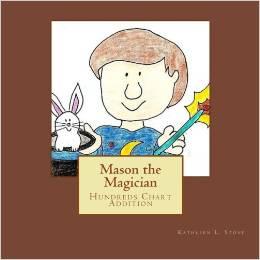Mix and Match Expanded Notation
There are so many skills that children have to know before they even begin to solve double-digit addition and subtraction problems. One of the key skills is to be able to decompose, or break apart a number, into an expanded notation format. For example, 27 = 20 + 7.
Mix and Match Expanded Notation (available on the Resources page) is a great way to practice this skill. Each child is given a card that either has a number (i.e. 59) or an expanded notation equation (59 = 50 + 9) on it.
There are so many skills that children have to know before they even begin to solve double-digit addition and subtraction problems. One of the key skills is to be able to decompose, or break apart a number, into an expanded notation format. For example, 27 = 20 + 7.
Mix and Match Expanded Notation (available on the Resources page) is a great way to practice this skill. Each child is given a card that either has a number (i.e. 59) or an expanded notation equation (59 = 50 + 9) on it.
- Children walk around the room, switching cards with each other.
- At a given signal, the children "freeze" and (using the card they currently have) find a partner whose card goes with their card. So if one child's card says "21" they will match up with the child who has a card that said "21 = 20 + 1."
- When they find their partner, they stand back-to-back.
- If you are lucky enough to have a document camera and projector in your classroom you can have partners use them to allow the whole class help them double check their work. If you look closely at the screen you will be able to see their number cards
Please check out each individual page under the Resources section to download free resources to use with your children to help them practice their math skills. I would love to hear how you are using my books, resources and ideas with your children. Please visit the Contact Me page and let me know.
Interested in even more resources and ideas? Visit my TPT store at ...

